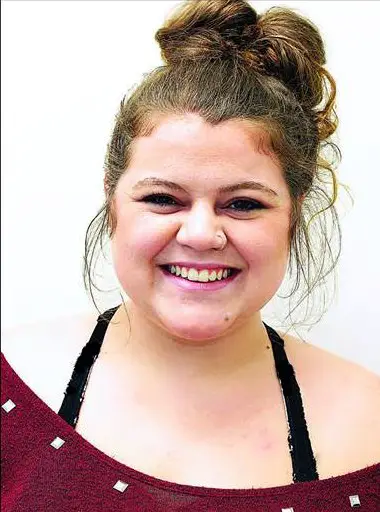Netflix released the second season of their original series “Atypical” on Sept. 7 and it is 10 episodes of emotional engagement, character exploration and actual laugh-out-loud moments.
“Atypical” follows the misadventures of the Gardner family — primarily Sam (Keir Gilchrist), who is on the autism spectrum, as he struggles to navigate the world of high school, romance and college applications. But the show has evolved into so much more than Sam’s coming-of-age story. “Atypical” is a thoughtful look at the different facets of humanity. It’s a show that everyone could enjoy, but, more importantly, the autism representation makes it a show that everyone needs to watch because there is so much to take away from it.
While I cannot personally speak on specific aspects of autism’s portrayal in “Atypical,” the show’s creator, Robia Rashid, has proven she is passionate about depicting autism in a positive, authentic way. The first season received criticism for featuring what seems to be the default autistic character in entertainment: a straight, white, cisgender male with an affinity for STEM subjects and a lack of empathy. And, unfortunately, this character was not played by someone with autism.
However, the new season of the show deliberately steps out of those confines in various ways. First, Sam tries out group therapy and viewers are introduced to his new peer group, which consists of five more characters on the spectrum, each played by an actor or actress with autism.
According to Rashid, “It’s a show, first and foremost it’s about a family, but it’s definitely about the autism community, so I wanted as much involvement from the autism community as possible and I loved the idea of this peer group. It’s just been more successful, more fun and lovely than I even hoped for.”
The new additions to the cast paint a broader picture of people on the spectrum, as the characters have vastly different personalities and hobbies. It’s also important to note that there are people of color within the peer group, which is crucial when it comes to an authentic illustration of autism. The new cast members explicitly show that there is no “one size fits all” model for autism.
This season, Rashid also worked with David Finch as a consultant. He is on the autism spectrum himself and the author of the book “The Journal of Best Practices: A Memoir of Marriage, Asperger Syndrome, and One Man’s Quest to Be a Better Husband.” So, there were autistic voices both in the show and behind the scenes.
Of course, it’s also critical to look at how Sam, the most prominent character on the spectrum, was characterized this season. The 10-episode arc focused on Sam grappling with independence, from cooking his own breakfast to deciding which college he wants to attend.
In doing so, Sam shocks his friends and family by choosing to pursue art instead of a STEM program. This is clearly an effort to stray from the idea that everyone on the spectrum is a math and science genius and that those with autism aren’t sensitive enough for art. Yes, Sam still has a knack for biology and a penchant for Arctic penguins, but he is also passionate about art.
That duality is partly why Sam is such a dynamic character. His autism might explain how he processes the world, but it is not the only quality that defines him. He’s not a walking compilation of symptoms, he’s a person with hobbies, relationships and fears. He makes mistakes and he learns from them, he has family drama and he’s confused about girls. Sam’s character is relatable to everyone, even neurotypical viewers.
At the end of the day, what makes this show so important is its relatability. Other entertainment that portrays autism (“The Good Doctor” or “Rain Man,” to name a couple) presents the characters on the spectrum as if they are practically otherworldly — emphasis on “other.” Whereas those characters don’t feel real (though savant syndrome is very real), Sam’s ability to connect with the audience allows watchers to get to know him and gives the show authenticity.
Sam’s interactions with others throughout the series also lend a layer of authenticity to “Atypical.” His relationships are complex and messy, but they’re also genuine. He and his sister Casey (Brigette Lundy-Paine) fight a lot, but they are also fiercely protective of one another. Casey doesn’t treat Sam like he’s delicate. She’s sensitive to his needs, but she also isn’t afraid to “bust his balls.”
Then there’s Sam’s friendship with his co-worker Zahid (Nik Dodani), which is one of the purest bromances on television. Sam thinks his goofy best friend is the wisest person he knows, especially when it comes to girls, though it’s clear Zahid is not exactly a smooth-talker.
However, Sam doesn’t realize how much he helps Zahid become a more sensitive person and how he inspires Zahid to pursue a more challenging future. The boys’ relationship isn’t about a neurotypical kid and a kid with autism; it’s a genuine friendship that helps both characters get through tough times.
Sam’s romantic entanglements and his relationship with his parents are complicated, too. His feelings shift and grow throughout every episode. It’s so important to include the different dynamics and layers of each relationship because it’s realistic. It’s humanizing, which shouldn’t be revolutionary but kind of is. In a world with a severe lack of autism representation in entertainment, it’s necessary to emphasize the fact that people on the spectrum are, in fact, just people.
I’m sure there are still a lot of errors in the way “Atypical” depicts people with autism, but Rashid’s mission to communicate a positive, authentic portrayal gives me confidence that, if the series is renewed for a third season, the writers will work even harder to demolish misconceptions.
So, although the show may not be perfect, it’s important. Not only do other people on the spectrum have the chance to see themselves represented, but those who aren’t on the spectrum will walk away with a newfound awareness and empathy for people with autism.

















